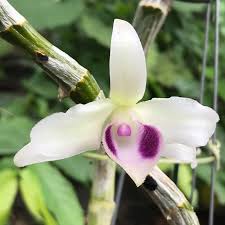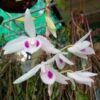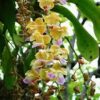# Exploring Conservation Organizations for Phalaenopsis Orchids Worldwide

## Introduction
Phalaenopsis orchids, commonly known as moth orchids, are among the most popular and commercially cultivated orchid species globally. Their stunning beauty, long-lasting blooms, and wide range of colors make them a favorite among plant enthusiasts and collectors. However, with increasing habitat loss, illegal harvesting, and climate change, the conservation of these remarkable plants has become more critical than ever. This article will delve into various conservation organizations dedicated to preserving Phalaenopsis orchids worldwide, highlighting their missions, initiatives, and impacts on the orchid conservation landscape.
## 1. The Importance of Conservation for Phalaenopsis Orchids
### 1.1 Threats to Phalaenopsis Orchids
The primary threats to Phalaenopsis orchids include:
– **Habitat Loss**: Deforestation and urbanization lead to the destruction of natural habitats where these orchids thrive.
– **Illegal Harvesting**: The high demand for orchids in the ornamental plant market has resulted in illegal collection from the wild, significantly impacting their populations.
– **Climate Change**: Altered weather patterns affect the delicate ecosystems that support these orchids, leading to potential declines in their survival rates.
### 1.2 The Role of Conservation Organizations
Conservation organizations play a crucial role in protecting Phalaenopsis orchids and their habitats. These groups work to:
– **Raise Awareness**: Educate the public about the importance of orchids and the threats they face.
– **Protect Habitats**: Advocate for the preservation of natural habitats through legal means and sustainable practices.
– **Conduct Research**: Study orchid species, their ecosystems, and the impacts of environmental changes to inform conservation strategies.
– **Promote Sustainable Practices**: Encourage cultivation practices that do not harm wild populations, such as responsible horticulture and ethical sourcing.
## 2. Prominent Conservation Organizations
### 2.1 The Orchid Conservation Coalition (OCC)
#### 2.1.1 Overview
Founded in 2005, the Orchid Conservation Coalition (OCC) is a global network of organizations, institutions, and individuals dedicated to preserving orchid species and their habitats. The OCC focuses on promoting conservation initiatives and increasing awareness about orchid conservation issues.
#### 2.1.2 Initiatives
– **Conservation Grants**: OCC provides funding for various conservation projects worldwide, supporting research and habitat protection efforts.
– **Awareness Campaigns**: The coalition conducts educational campaigns to raise awareness about the importance of orchids in biodiversity and their ecological roles.
– **Collaboration**: OCC collaborates with local organizations, governments, and universities to enhance conservation efforts and share knowledge.
### 2.2 The International Union for Conservation of Nature (IUCN)
#### 2.2.1 Overview
The International Union for Conservation of Nature (IUCN) is a global organization that focuses on nature conservation and sustainable use of natural resources. With over 1,400 member organizations, including government agencies, NGOs, and scientific institutions, IUCN works to provide data and guidance for conservation efforts.
#### 2.2.2 Orchid Red List
IUCN maintains the “Red List of Threatened Species,” which includes assessments of various orchid species, including Phalaenopsis. This list helps identify the conservation status of orchids and prioritize efforts for their protection.
#### 2.2.3 Initiatives
– **Research and Data Collection**: IUCN conducts research on orchid populations and their habitats, contributing to informed conservation strategies.
– **Policy Advocacy**: The organization advocates for policies that support biodiversity conservation, including the protection of orchids and their habitats.
– **Partnerships**: IUCN collaborates with local and global organizations to enhance orchid conservation initiatives.
### 2.3 The Royal Botanic Gardens, Kew (RBG Kew)
#### 2.3.1 Overview
The Royal Botanic Gardens, Kew, based in the United Kingdom, is one of the leading botanical institutions globally. RBG Kew is dedicated to the conservation and study of plant diversity, including orchids.
#### 2.3.2 Orchid Conservation Efforts
– **Seed Bank**: RBG Kew operates a seed bank that stores seeds from various orchid species, including Phalaenopsis, to safeguard their genetic diversity.
– **Research**: The institution conducts research on orchid biology, ecology, and conservation, contributing valuable data to the field.
– **Public Engagement**: RBG Kew promotes public awareness through exhibitions, educational programs, and online resources about orchids and their conservation.
### 2.4 The American Orchid Society (AOS)
#### 2.4.1 Overview
The American Orchid Society (AOS) is a non-profit organization dedicated to promoting the culture, conservation, and appreciation of orchids. Founded in 1921, AOS provides resources for orchid enthusiasts, growers, and conservationists.
#### 2.4.2 Initiatives
– **Orchid Conservation Grants**: AOS provides funding for conservation projects that focus on the protection of orchids and their habitats.
– **Educational Programs**: The organization offers educational resources and workshops on orchid cultivation, conservation, and responsible sourcing.
– **Partnerships**: AOS collaborates with local and international organizations to promote orchid conservation initiatives.
### 2.5 The World Orchid Council (WOC)
#### 2.5.1 Overview
The World Orchid Council (WOC) is an international organization that brings together orchid societies, growers, and enthusiasts from around the world. Founded in 1972, WOC aims to promote the conservation and appreciation of orchids globally.
#### 2.5.2 Initiatives
– **Conservation Advocacy**: WOC advocates for the conservation of orchids through public awareness campaigns and collaboration with various organizations.
– **Orchid Exhibitions**: The council organizes international orchid exhibitions, showcasing the beauty of orchids while promoting conservation efforts.
– **Research Support**: WOC supports research initiatives focused on orchid biology, ecology, and conservation.
### 2.6 The Orchid Species Survival Plan (OSSP)
#### 2.6.1 Overview
The Orchid Species Survival Plan (OSSP) is a collaborative effort among various botanical gardens and institutions to ensure the survival of endangered orchid species. The plan focuses on captive breeding, habitat preservation, and research.
#### 2.6.2 Initiatives
– **Captive Breeding Programs**: OSSP partners with botanical gardens to establish breeding programs for endangered orchid species, including Phalaenopsis.
– **Habitat Restoration**: The plan encourages habitat restoration efforts to protect wild orchid populations and their ecosystems.
– **Educational Outreach**: OSSP promotes awareness and education about the importance of orchid conservation through various outreach programs.
## 3. Local and Regional Organizations
### 3.1 The Philippine Orchid Society (POS)
#### 3.1.1 Overview
The Philippine Orchid Society (POS) is dedicated to promoting orchid culture and conservation in the Philippines, a country rich in orchid biodiversity, including many Phalaenopsis species.
#### 3.1.2 Initiatives
– **Conservation Programs**: POS conducts conservation initiatives aimed at protecting native orchids and their habitats in the Philippines.
– **Educational Workshops**: The society organizes workshops and events to educate the public about orchid cultivation and conservation.
– **Exhibitions**: POS hosts orchid exhibitions to showcase the beauty of native orchids and raise awareness about conservation efforts.
### 3.2 The Orchid Conservation Program in Thailand
#### 3.2.1 Overview
Thailand is home to a diverse array of orchid species, making it a significant region for orchid conservation. Various organizations, including government agencies and NGOs, are dedicated to protecting orchids in the country.
#### 3.2.2 Initiatives
– **Protected Areas**: Thailand has established protected areas and national parks to safeguard natural habitats for orchids and other flora.
– **Public Education**: Organizations in Thailand promote public education about orchid conservation and the importance of protecting natural habitats.
– **Sustainable Cultivation**: Efforts are underway to promote sustainable orchid cultivation practices among local farmers, reducing pressure on wild populations.
### 3.3 The Orchid Conservation Program in Ecuador
#### 3.3.1 Overview
Ecuador is known for its rich biodiversity, including numerous orchid species. Various organizations are working to protect orchids and their ecosystems in the country.
#### 3.3.2 Initiatives
– **Habitat Restoration**: Conservation programs in Ecuador focus on habitat restoration and reforestation to protect native orchids.
– **Research and Documentation**: Organizations conduct research to document orchid species and their habitats, contributing to conservation efforts.
– **Community Involvement**: Local communities are engaged in conservation initiatives, promoting sustainable practices and raising awareness about the importance of orchids.
## 4. The Role of Education and Outreach in Conservation
### 4.1 Public Awareness Campaigns
Conservation organizations often conduct public awareness campaigns to educate communities about the importance of orchids and the threats they face. These campaigns aim to foster appreciation for orchids and encourage responsible practices among plant enthusiasts.
### 4.2 Workshops and Seminars
Many organizations organize workshops and seminars focused on orchid cultivation, conservation techniques, and sustainable practices. These events provide valuable information to growers and the public, fostering a sense of community around orchid conservation.
### 4.3 Collaborations with Educational Institutions
Collaborations between conservation organizations and educational institutions promote research and education on orchids. Students and researchers work together to study orchids, contributing to the body of knowledge necessary for effective conservation efforts.
## 5. The Impact of Conservation Organizations
### 5.1 Success Stories
Numerous success stories highlight the positive impact of conservation organizations on Phalaenopsis orchids. For example:
– **Restoration Projects**: Successful habitat restoration projects have led to the resurgence of native orchid populations in areas where they were once declining.
– **Captive Breeding Success**: Captive breeding programs have successfully reintroduced endangered orchid species into
their natural habitats, contributing to their recovery.
– **Increased Awareness**: Educational initiatives have raised awareness about orchid conservation, leading to greater public support for preservation efforts.
### 5.2 Challenges Ahead
Despite the successes, challenges remain in the conservation of Phalaenopsis orchids. Continued habitat loss, climate change, and illegal harvesting threaten their survival. Conservation organizations must adapt their strategies and collaborate with local communities to address these challenges effectively.
## Conclusion
The conservation of Phalaenopsis orchids is a complex and ongoing endeavor that requires the collective efforts of various organizations, researchers, and the public. Through education, research, habitat protection, and advocacy, these organizations are making significant strides in preserving the beauty and diversity of orchids worldwide. By supporting these initiatives, we can contribute to the protection of Phalaenopsis orchids and ensure that future generations can enjoy their stunning blooms and ecological significance. Together, we can foster a deeper appreciation for these remarkable plants and work towards a sustainable future for orchid conservation.

